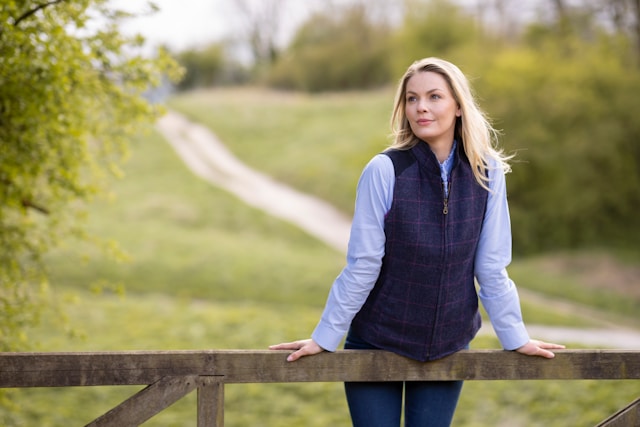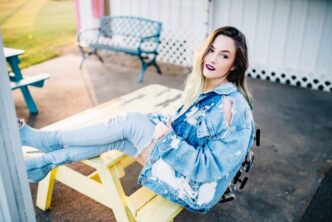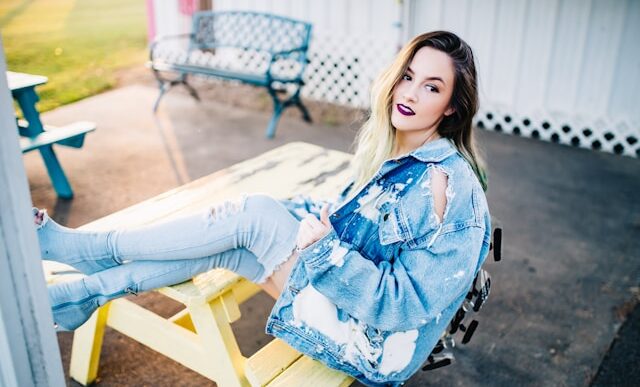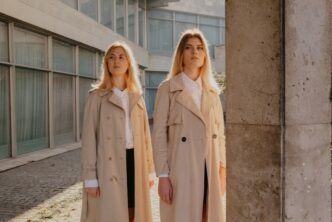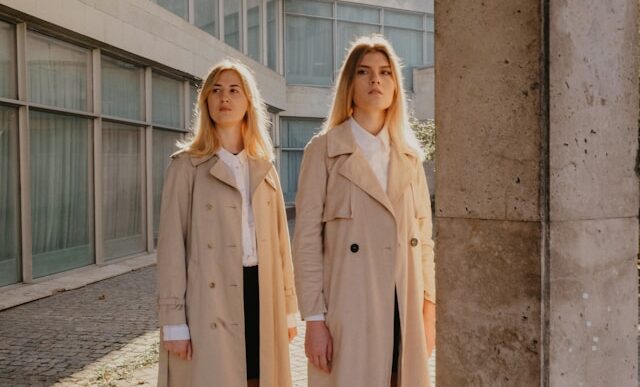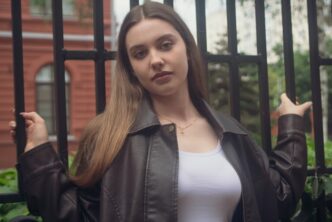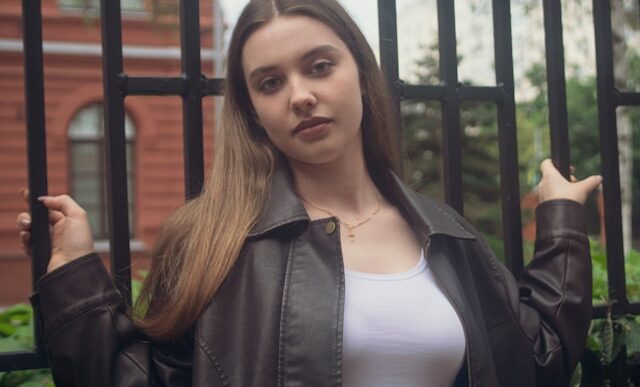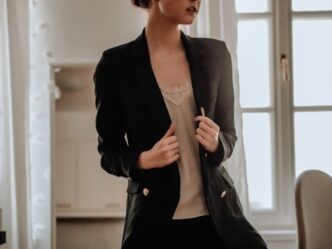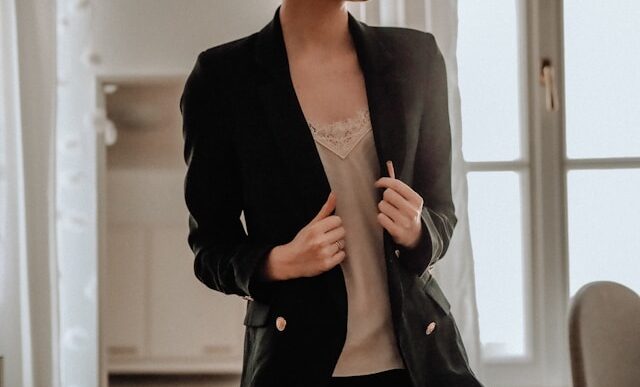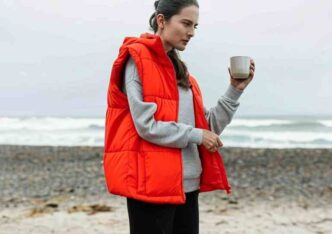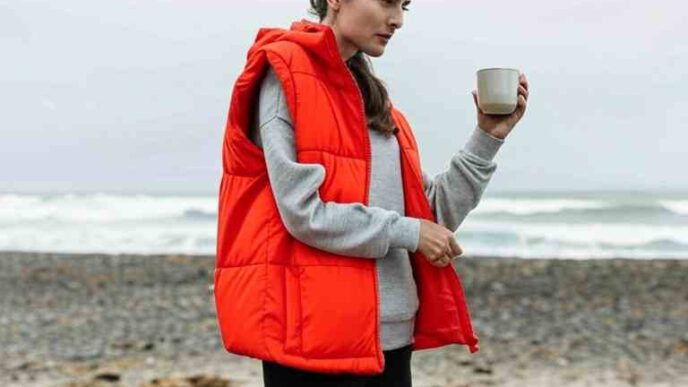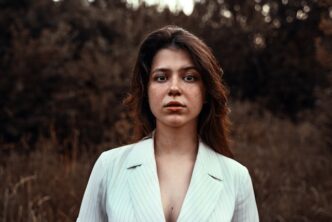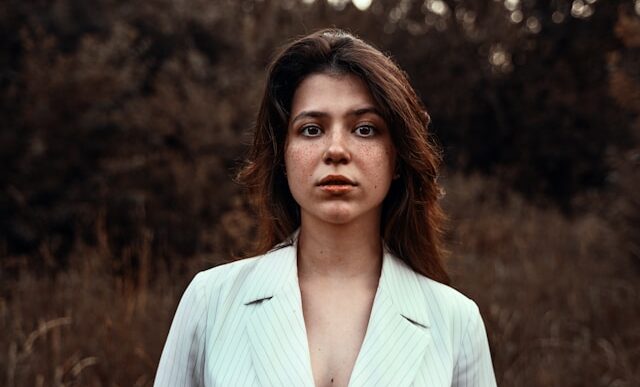The waistcoat—once the exclusive domain of Victorian gentlemen and formal menswear—has undergone one of fashion’s most dramatic reinventions, emerging as a surprisingly versatile cornerstone of contemporary women’s wardrobes. Understanding how to style waistcoat for women means appreciating this garment’s remarkable journey from boardroom power play to street style essential. What makes the modern waistcoat particularly compelling is its chameleon-like ability to oscillate between masculine-inspired authority and feminine sophistication, often within the same outfit. From Stella McCartney’s deconstructed interpretations that challenge traditional tailoring to Gabriela Hearst’s architectural approaches that blur gender lines, today’s waistcoats speak to fashion’s ongoing dialogue about power dressing in the 21st century. This comprehensive exploration reveals how these structured pieces can serve as both polished foundations and unexpected statement elements, transforming everything from casual weekend looks to boardroom presentations. Whether you’re drawn to classic pinstripe precision or contemporary oversized silhouettes, mastering waistcoat styling unlocks a world of sartorial possibilities that honor tradition while embracing fearless modernity.
Top 10 Waistcoat Outfit Ideas
The versatility of waistcoat outfit for women extends far beyond traditional suiting applications, revealing themselves as sophisticated styling foundations that adapt remarkably across occasions, seasons, and personal aesthetics. These carefully curated combinations demonstrate how women’s waistcoat outfits can challenge conventional dressing rules while maintaining that essential element of polished sophistication that makes waistcoats so compelling.
Waistcoat with Wide-Leg Trousers
This sophisticated power-dressing combination channels the architectural elegance of brands like The Row and Toteme, where precise tailoring meets contemporary proportions to create looks that command attention through restraint rather than embellishment. The pairing demonstrates masterful proportion play—the waistcoat’s structured precision provides perfect counterpoint to wide-leg trousers’ flowing drama, creating visual tension that feels both modern and timeless.
The magic lies in understanding fabric relationships and tonal coordination. Choose waistcoats in structured materials—wool crepe, ponte, or quality cotton blends—that hold their shape while complementing the trousers’ drape. Monochromatic approaches create sophisticated, editorial-inspired looks: charcoal waistcoat with matching wide-leg trousers, or cream pieces that establish elegant tonal stories. For more dynamic combinations, consider complementary colors that create rich dialogues—navy waistcoat with camel trousers, or sage green with cream for organic sophistication.
The styling approach should emphasize clean lines and intentional proportions. Ensure the waistcoat hits at the natural waist to create optimal proportion relationships with wide-leg silhouettes. Consider whether to button fully for structured formality or leave partially open for relaxed sophistication. The trouser rise becomes crucial—high-waisted styles work beautifully with cropped waistcoats, while mid-rise options pair elegantly with longer vest silhouettes.
Complete this authoritative look with accessories that honor both pieces’ sophisticated heritage. Pointed-toe flats provide professional elegance with comfort for extended wear, while low-heeled pumps add subtle elevation without overwhelming the combination’s clean lines. Structured handbags in coordinating tones maintain the polished aesthetic, while minimal jewelry—perhaps a classic watch or delicate chain—enhances rather than competes with the tailoring’s inherent sophistication.
Waistcoat with Midi Skirt
This feminine-meets-masculine combination exemplifies contemporary fashion’s ongoing exploration of gender-fluid dressing, creating looks that feel both powerful and graceful. The pairing draws inspiration from designers like Gabriela Hearst and Christopher Kane, who excel at juxtaposing structured elements with flowing silhouettes to create compelling visual narratives that challenge traditional style categories.
The contrast between the waistcoat’s sharp precision and the midi skirt’s fluid movement creates dynamic tension that elevates both pieces beyond their individual impact. Choose midi skirts that complement rather than compete with the waistcoat’s structure—A-line styles provide graceful movement while maintaining sophisticated appeal, while pleated versions add textural interest that works beautifully with tailored waistcoats. Slip skirts in silk or satin create luxurious contrast against wool or cotton waistcoats, while structured midi skirts in similar fabrics maintain tonal harmony.
Color coordination within this combination offers extensive creative possibilities. Tonal approaches—navy waistcoat with navy skirt in different textures—create sophisticated monochromatic elegance that photographs beautifully. Contrasting combinations provide more dramatic appeal: black waistcoat with cream skirt for graphic sophistication, or burgundy vest with charcoal skirt for rich autumnal elegance. The key lies in ensuring both pieces feel intentionally coordinated rather than accidentally matched.
Styling details can transform this combination from good to exceptional. Consider tucking techniques if wearing an underlayer—silk camisoles provide luxurious foundation while maintaining smooth lines under structured waistcoats. The waistcoat’s fit becomes crucial: it should define the waist without creating bulk, allowing the skirt’s silhouette to flow naturally from the fitted bodice. Complete with accessories that bridge both elements’ aesthetics—ankle boots for contemporary edge, pointed-toe flats for professional polish, or heeled sandals for elegant femininity.
Waistcoat with Jeans
This high-low combination represents fashion’s democratic approach to luxury dressing, where investment pieces meet everyday essentials to create approachable sophistication. The pairing channels the effortless elegance seen in contemporary street style, where structured waistcoats add instant polish to casual denim foundations. This approach appeals to modern women who appreciate elevated casual dressing that feels both intentional and comfortable.
The success of this combination lies in choosing jeans that complement rather than undermine the waistcoat’s sophisticated appeal. Dark-wash denim provides the most versatile foundation, offering enough visual weight to support structured waistcoats while maintaining casual comfort. Straight-leg or slight bootcut silhouettes work particularly well, providing clean lines that honor the waistcoat’s tailored precision. Avoid overly distressed or extremely casual denim that might create jarring contrasts with the vest’s inherent formality.
Waistcoat selection becomes crucial for achieving the right balance between polished and approachable. Choose pieces with enough structure to maintain their sophisticated appeal while avoiding overly formal details that might feel costume-like in casual contexts. Contemporary waistcoats in interesting textures—subtle pinstripes, tonal patterns, or quality knits—add visual interest while maintaining wearable appeal.
The underlayer choice significantly impacts the overall aesthetic direction. Classic white button-downs create preppy sophistication perfect for elevated casual occasions, while fitted tees provide contemporary minimalism that feels fresh and modern. Silk camisoles add unexpected luxury that elevates the denim while maintaining the combination’s inherent ease. Complete with accessories that bridge both elements: canvas sneakers for weekend sophistication, leather loafers for elevated casual appeal, or ankle boots for contemporary edge that works across seasons.
Waistcoat with Silk Blouse
This luxurious layering approach demonstrates sophisticated texture mixing while creating looks that transition seamlessly from professional environments to elevated social occasions. The combination draws inspiration from the refined elegance of brands like Brunello Cucinelli and Loro Piana, where premium materials meet thoughtful construction to create pieces that whisper rather than shout luxury.
The interplay between silk’s lustrous fluidity and the waistcoat’s structured precision creates compelling visual and tactile contrasts that elevate both pieces beyond their individual impact. Choose silk blouses with enough body to maintain their shape under structured waistcoats—heavier silk weights or pieces with subtle structure provide better foundations than extremely fluid varieties that might appear overwhelmed by the vest’s tailoring.
Color relationships within this sophisticated pairing offer numerous elegant possibilities. Monochromatic approaches create refined, editorial-inspired looks—cream waistcoat over ivory silk blouse, or charcoal vest with gray silk for tonal sophistication. Contrasting combinations provide more dynamic appeal while maintaining luxury status: navy waistcoat over white silk for classic elegance, or burgundy vest with champagne blouse for rich, jewel-like combinations that work beautifully for evening events.
Styling considerations should emphasize both pieces’ luxury credentials while maintaining practical wearability. Consider the silk blouse’s collar and cuff details—they should complement rather than compete with the waistcoat’s neckline and armhole treatments. The fit relationship becomes crucial: the blouse should provide smooth foundation without creating bulk, while the waistcoat should enhance rather than constrain the silk’s natural drape. Complete with accessories that honor both pieces’ premium status—quality leather goods, refined jewelry, and footwear that reflects the combination’s sophisticated positioning.
Waistcoat with Tailored Shorts
This contemporary combination challenges traditional seasonal dressing rules while creating looks that feel both professional and refreshingly modern. The pairing draws inspiration from forward-thinking designers like Jacquemus and Ganni, who excel at unexpected juxtapositions that feel both surprising and inevitable. This approach particularly appeals to contemporary work environments where traditional dress codes are evolving to embrace more creative and comfortable options.
The key to success lies in choosing tailored shorts that maintain professional dignity while working harmoniously with the waistcoat’s structured formality. High-waisted styles work particularly well, creating seamless transitions from the vest’s fitted silhouette while providing appropriate coverage for professional environments. Choose shorts in quality fabrics—wool crepe, structured cotton, or quality blends—that echo the waistcoat’s tailoring standards and maintain crisp, professional appearance.
Length considerations become crucial for maintaining appropriate sophistication. Bermuda-length or slightly longer styles provide conservative elegance suitable for most professional environments, while shorter cuts require careful consideration of workplace appropriateness and personal comfort levels. The proportion relationship between waistcoat length and shorts hemline should create harmonious rather than competing visual elements.
Color coordination within this modern pairing offers opportunities for both traditional and contemporary approaches. Matching sets create sophisticated suiting-inspired looks that feel intentionally coordinated and professionally appropriate. Contrasting combinations—navy waistcoat with cream shorts, or charcoal vest with camel pieces—provide more dynamic appeal while maintaining the professional sophistication that makes this combination workplace-appropriate. Complete with accessories that support the professional aesthetic: pointed-toe flats, low pumps, or contemporary loafers that bridge formal and casual requirements.
Waistcoat with Layered Tank Tops
This contemporary styling approach demonstrates advanced layering techniques while creating looks that feel both effortless and carefully considered. The combination channels the innovative spirit seen in brands like Ganni and & Other Stories, where unexpected layering creates visual interest and practical versatility. This approach particularly appeals to younger demographics who appreciate fashion-forward thinking and creative problem-solving in their wardrobe choices.
The success of this layering technique lies in understanding color relationships and texture coordination that create intentional rather than accidental visual effects. Start with a fitted tank in a neutral tone—white, cream, or soft gray—that provides clean foundation for the waistcoat. Add a second tank in a complementary or contrasting color that creates visual interest when glimpsed at the neckline or armholes. The key is ensuring all layers work harmoniously rather than competing for attention.
Fabric choices become crucial for comfortable layering that maintains sophisticated appeal. Choose tanks in lightweight, breathable materials that won’t create bulk under the waistcoat’s structure. Modal, cotton blends, or quality synthetic fabrics provide comfort while maintaining smooth lines that honor the vest’s tailored precision. Avoid thick or heavily textured fabrics that might create unflattering bulk or compromise the waistcoat’s intended silhouette.
Styling details can elevate this casual approach into sophisticated territory. Consider how necklines interact—the top tank should complement the waistcoat’s neckline rather than creating competing visual elements. Length relationships matter: tanks should be long enough to provide appropriate coverage while short enough to maintain the vest’s proportional impact. Complete with accessories that honor the combination’s contemporary spirit: minimalist jewelry, structured bags in interesting colors, and footwear that feels current and intentional rather than basic or unremarkable.
Waistcoat with Turtleneck
This sophisticated layering combination creates looks that work beautifully across seasons while demonstrating masterful proportion relationships and textural contrasts. The pairing draws inspiration from the minimalist elegance of brands like COS and Lemaire, where thoughtful layering creates visual interest through restraint rather than embellishment. This approach particularly appeals to those who appreciate architectural thinking in their wardrobe choices.
The turtleneck provides elegant foundation that complements rather than competes with the waistcoat’s structured formality. Choose turtlenecks in fine-gauge knits that maintain their shape while providing smooth lines under the vest’s tailoring. Cashmere offers luxury appeal and superior drape, while quality merino wool provides practical warmth with refined appearance. Cotton blends offer easy care with comfortable wearability, though they may lack the premium feel that elevates this combination into true luxury territory.
Color relationships within this sophisticated pairing require careful consideration to avoid overwhelming effects or unflattering contrasts. Tonal approaches create refined, monochromatic elegance—cream turtleneck under ivory waistcoat, or charcoal pieces that establish sophisticated gray stories. Contrasting combinations provide more dynamic appeal: white turtleneck under navy waistcoat for classic nautical inspiration, or black pieces under camel vest for rich, autumnal sophistication.
The fit relationship becomes crucial for achieving flattering rather than bulk-creating effects. The turtleneck should fit close to the body without creating pulling or visible lines under the waistcoat’s structure. The vest should accommodate the turtleneck’s coverage without appearing strained or uncomfortable. Consider how the high neckline affects jewelry choices—statement earrings work beautifully when necklaces might compete with the turtleneck’s coverage. Complete with accessories that honor both pieces’ sophisticated positioning and seasonal appropriateness.
Waistcoat with Printed Dress
This unexpected combination demonstrates advanced pattern mixing while creating looks that feel both artistic and wearable. The pairing channels the creative spirit seen in contemporary fashion, where unexpected juxtapositions create memorable styling moments that showcase individual creativity and fashion confidence. This approach particularly appeals to those who appreciate fashion as self-expression and aren’t afraid to challenge conventional styling rules.
The success of this combination lies in choosing prints that complement rather than compete with the waistcoat’s structured formality. Floral patterns work beautifully when they echo colors within the vest’s fabric or coordinate harmoniously with its tone. Geometric prints can create interesting dialogues with the waistcoat’s architectural lines, while abstract patterns offer artistic appeal that feels contemporary and sophisticated.
Scale relationships become crucial when combining multiple visual elements successfully. Large-scale prints work well with solid-colored waistcoats, while busy patterns require more careful coordination to avoid overwhelming effects. The dress’s silhouette should complement the waistcoat’s proportions—fitted styles work beautifully with structured vests, while flowing pieces can balance more relaxed waistcoat interpretations when styled thoughtfully.
Color coordination principles guide successful pattern mixing that feels intentional rather than accidental. Extract one or two colors from the print and ensure they appear somewhere in the waistcoat—either as the main color or accent details. This creates visual connections that tie the combination together harmoniously. Complete with accessories that support rather than compete with the pattern mixing—neutral shoes and bags that allow the dress and waistcoat combination to remain the primary focus, and jewelry that enhances rather than adds unnecessary visual complexity.
Waistcoat with Leather Pants
This edgy combination demonstrates how structured pieces can add sophistication to contemporary favorites while creating looks that feel both powerful and modern. The pairing channels the confident aesthetic seen in brands like Saint Laurent and Isabel Marant, where unexpected material combinations create memorable fashion moments that showcase personal style confidence and creative thinking.
The contrast between the waistcoat’s traditional tailoring heritage and leather pants’ contemporary edge creates compelling visual tension that elevates both pieces beyond their typical applications. Choose leather pants in styles that complement the waistcoat’s formality—straight-leg or slightly tapered cuts provide sophisticated foundations, while avoiding overly tight or casual styles that might create jarring contrasts with the vest’s inherent structure.
Material quality becomes crucial when combining investment pieces that each carry significant style weight. Choose leather pants with superior construction and appropriate weight that won’t overwhelm the waistcoat’s tailored precision. Similarly, the vest should possess enough quality and structure to hold its own against leather’s inherent visual drama and textural impact.
Color relationships within this sophisticated pairing offer numerous dramatic possibilities. Black leather provides classic foundation that works with virtually any waistcoat color while maintaining graphic sophistication. Brown or cognac leather offers organic appeal that works beautifully with earth-toned or neutral waistcoats. The key lies in ensuring both pieces feel intentionally coordinated rather than accidentally paired, creating purposeful rather than coincidental combinations.
Complete this confident look with accessories that honor both pieces’ elevated status while maintaining the combination’s edgy sophistication. Ankle boots continue the leather theme while providing practical foundation, while heeled options add dramatic sophistication appropriate for evening events. Structured handbags and minimal jewelry maintain focus on the compelling material combination rather than adding unnecessary visual competition.
Waistcoat with Statement Skirt
This bold combination demonstrates how classic pieces can anchor contemporary statements while creating looks that feel both grounded and fashion-forward. The pairing draws inspiration from the creative confidence seen in brands like Jacquemus and Simone Rocha, where traditional elements meet unexpected details to create memorable, conversation-starting ensembles.
The waistcoat provides sophisticated foundation that allows statement skirts to shine without overwhelming the overall composition. Choose vests in classic colors and refined fabrics that complement rather than compete with the skirt’s dramatic elements—whether those involve bold patterns, interesting textures, unusual silhouettes, or eye-catching colors. The vest’s restraint creates necessary visual balance that prevents the combination from feeling costume-like or overwhelming.
Statement skirt selection requires understanding how dramatic elements interact with the waistcoat’s structured formality. Voluminous skirts create interesting proportion play against fitted vests, while textured or embellished pieces add visual interest that the waistcoat’s clean lines can support effectively. The key lies in ensuring both pieces contribute meaningfully to the overall aesthetic without creating competing focal points that confuse rather than enhance the intended style message.
Styling considerations should emphasize the statement skirt while maintaining overall sophistication and wearability. Consider how the waistcoat’s length interacts with the skirt’s silhouette—cropped vests work beautifully with high-waisted statement pieces, while longer styles might suit different proportional relationships depending on the skirt’s specific design and your body type.
Complete this confident combination with accessories that support rather than compete with the statement elements. Choose footwear and handbags that provide neutral grounding or echo colors within the statement skirt, allowing the waistcoat-skirt combination to remain the primary focus while ensuring practical functionality and appropriate sophistication for your intended occasions.
Types and Styles of Waistcoat for Women
The contemporary waistcoat landscape represents a fascinating evolution from its Victorian menswear origins, encompassing everything from precise tailoring homages to deconstructed interpretations that challenge traditional garment boundaries. Understanding the various types of waistcoat for women enables strategic wardrobe building while ensuring selections align with personal style preferences, professional requirements, and the specific aesthetic narratives you want to create.
Classic Tailored Waistcoats represent the category’s most traditional interpretation, drawing directly from menswear heritage while incorporating feminine proportions and contemporary details. These pieces typically feature structured construction with canvas interfacing, precise button placement, and traditional details like welt pockets or pointed hemlines that reference formal suiting traditions. Brands like Savile Row Houses and contemporary interpreters like The Row create exceptional examples that demonstrate how traditional techniques can be adapted for modern feminine wardrobes without losing their inherent sophistication and authority.
The construction quality in classic waistcoats often rivals that of premium blazers, featuring hand-padded canvas, floating chest pieces, and meticulously finished seams that justify investment pricing through exceptional longevity and maintained appearance. These pieces work particularly well in professional environments where traditional dress codes appreciate craftsmanship and attention to detail, though their versatility extends across numerous styling contexts when approached creatively.
Contemporary Fashion Waistcoats reflect current design sensibilities while maintaining the essential structured elements that define the category. These interpretations might feature updated proportions—cropped lengths, asymmetrical closures, or exaggerated shoulders—that feel thoroughly modern while honoring the waistcoat’s tailoring heritage. Designers like Jacquemus and Ganni excel at creating pieces that reference traditional forms while incorporating unexpected details that make them feel current and personally expressive.
Material choices in contemporary waistcoats often explore beyond traditional wool suiting fabrics to include technical materials, interesting textures, or unexpected color palettes that expand styling possibilities while maintaining sophisticated appeal. These pieces particularly appeal to creative professionals or fashion-forward individuals who appreciate tradition but refuse to be constrained by conventional applications or conservative styling approaches.
Knitted and Soft-Structured Varieties offer comfortable alternatives that maintain waistcoat proportions while providing easier care and increased versatility across casual and professional contexts. These pieces typically feature sweater-vest construction with varying degrees of structure, from completely soft knits to pieces with subtle shaping that provides waist definition without formal tailoring’s rigid construction methods.
Quality knitted waistcoats often incorporate interesting stitch patterns, textural elements, or premium fibers like cashmere or merino wool that elevate them beyond basic casual wear into sophisticated wardrobe staples. The comfort factor makes these pieces particularly valuable for extended wear or travel scenarios where traditional tailored pieces might feel restrictive or impractical.
Oversized and Deconstructed Styles represent fashion’s ongoing exploration of proportion relationships and gender-fluid dressing approaches. These pieces might feature exaggerated shoulders, dramatically cropped proportions, or unconventional closure methods that challenge traditional waistcoat conventions while maintaining recognizable vest DNA. Brands like Balenciaga and Comme des Garçons create exceptional examples that demonstrate how traditional garments can be reimagined through contemporary design thinking.
The oversized approach often incorporates interesting styling possibilities—pieces worn as statement outerwear, dramatically proportioned layering elements, or architectural fashion statements that showcase confident personal style and appreciation for avant-garde design approaches. These pieces particularly appeal to fashion insiders and creative individuals who view clothing as artistic expression rather than merely functional coverage.
Vintage and Heritage-Inspired Interpretations honor historical waistcoat traditions while incorporating contemporary sizing and construction improvements that make them practical for modern wardrobes. These pieces often reference specific historical periods—Victorian, Edwardian, or early 20th-century interpretations—while updating fit, materials, and construction techniques for contemporary comfort and durability.
Quality vintage-inspired waistcoats often feature authentic details like mother-of-pearl buttons, traditional pocket treatments, or period-appropriate proportions that create genuine historical connections while remaining thoroughly wearable in contemporary contexts. These pieces work particularly well for individuals who appreciate craftsmanship heritage and want to incorporate historical references into modern styling approaches.
Seasonal and Fabric Variations address different climate needs and aesthetic preferences throughout the year. Summer waistcoats often utilize lighter fabrics like linen, cotton, or lightweight wool that provide structure without overwhelming warmth. Winter interpretations might incorporate substantial wool, cashmere, or even fur details that provide both style and practical warmth for cold-weather styling.
Luxury material options like silk, cashmere, or premium wool elevate waistcoats into investment territory while providing superior comfort and appearance that justifies higher price points through exceptional quality and refined aesthetic appeal. These pieces often feature superior construction details and finishing touches that distinguish them from mass-market alternatives while ensuring longevity that supports cost-per-wear calculations.
Understanding these various styles of waistcoat enables strategic shopping decisions that align with personal style preferences, professional requirements, and long-term wardrobe goals while maximizing versatility and individual expression opportunities.
How To Choose The Best Waistcoat
Selecting the perfect waistcoat requires systematic evaluation of multiple factors that impact both immediate satisfaction and long-term wardrobe value, ensuring investments align with personal style preferences while providing maximum versatility and styling opportunities across seasons, occasions, and evolving fashion preferences.
Step 1: Assess Your Body Type and Fit Preferences Understanding how different waistcoat styles work with your specific proportions ensures flattering, comfortable wear that enhances rather than detracts from your natural silhouette. Fitted waistcoats work beautifully for those who appreciate structured, body-conscious silhouettes and want to emphasize waist definition, though they require confidence and appropriate undergarments for optimal presentation. Relaxed or oversized styles offer comfortable ease and contemporary appeal while working well for layering and varied body types, though they require thoughtful styling to avoid overwhelming smaller frames.
Consider rise and length relationships relative to your torso proportions. Cropped waistcoats work particularly well with high-waisted bottoms and longer torsos, while extended lengths suit shorter torsos and mid-rise styling approaches. The armhole fit becomes crucial for comfort and appearance—properly fitted armholes should allow comfortable arm movement without gaping or pulling, while maintaining clean lines that honor the garment’s tailored precision.
Step 2: Evaluate Professional and Lifestyle Requirements Assess how the waistcoat will integrate into your professional environment and daily activities. Conservative corporate settings typically welcome traditional tailored styles in classic colors and fabrics, while creative industries often appreciate more contemporary interpretations with interesting details or unexpected proportions. Consider your daily activities and comfort requirements—highly structured pieces work well for shorter wear periods or sedentary work, while softer constructions provide better comfort for extended wear or active lifestyles.
Think about versatility across different contexts. Investment waistcoats should work across professional and social settings through strategic styling adjustments, maximizing cost-per-wear value while reducing wardrobe redundancy. Consider how the piece will integrate with existing wardrobe staples, ensuring coordination possibilities that extend styling options rather than requiring entirely new supporting pieces.
Step 3: Analyze Construction Quality and Material Standards Waistcoat quality varies dramatically across price points, making careful evaluation essential for investment pieces intended for regular wear and professional presentation. Examine construction details including seam finishing, button quality and placement, and interfacing or structure that maintains shape while providing comfort. Quality waistcoats feature consistent stitching, properly finished seams, and attention to detail that distinguishes superior craftsmanship from mass-production shortcuts.
Material quality significantly impacts both appearance and longevity. Natural fibers like wool, cotton, or linen typically provide superior drape, breathability, and aging characteristics compared to synthetic alternatives, though quality synthetic blends can offer practical advantages like easy care or stretch properties. Consider fabric weight and texture relative to intended use—substantial materials work well for professional or formal applications, while lighter weights provide better versatility across seasons and styling contexts.
Step 4: Consider Color and Styling Versatility Color selection dramatically impacts coordination possibilities and wardrobe integration success. Neutral colors like navy, black, gray, or cream provide maximum styling flexibility and work seamlessly with existing wardrobe pieces across seasons. Classic patterns like pinstripes or subtle textures add visual interest while maintaining professional appropriateness and broad coordination potential.
Bold colors or dramatic patterns create statement-making appeal but may offer limited styling options, requiring careful consideration of cost-per-wear calculations and coordination possibilities. Consider your personal color palette and skin tone when evaluating options, ensuring selections that enhance rather than compete with your natural coloring while providing versatile foundations for multiple styling approaches.
Step 5: Set Budget Parameters and Research Brand Reputation Determine realistic budget ranges based on expected wear frequency, quality requirements, and long-term wardrobe goals. Investment pieces from established tailoring houses or contemporary designers typically offer superior construction, materials, and design details that justify premium pricing through exceptional quality and timeless appeal. Research brand reputations for fit consistency, quality retention, and customer service to ensure informed purchasing decisions.
Consider cost-per-wear calculations that factor in versatility, quality, and expected wear frequency. Well-chosen investment waistcoats often provide better value than multiple lower-quality pieces through superior longevity, maintained appearance, and extensive styling possibilities that justify initial investment through extended useful life and consistent satisfaction.
Step 6: Plan for Care Requirements and Long-Term Maintenance Different waistcoat constructions require varying care approaches that impact both convenience and long-term appearance retention. Structured pieces often require professional dry cleaning to maintain their shape and appearance, while softer constructions might allow careful home care. Consider your maintenance preferences and budget for ongoing care when evaluating options, ensuring realistic expectations about required upkeep and associated costs.
Proper storage and handling preserve waistcoat structure and appearance between wears. Quality pieces benefit from padded hangers that maintain shoulder shape, while avoiding crushing or folding that can damage interfacing or create permanent wrinkles. Understanding care requirements ensures realistic expectations and proper maintenance that preserves investment value through extended wear life and maintained appearance.
These systematic recommendations ensure waistcoat selections provide exceptional value, styling versatility, and appropriate integration with personal style preferences and professional requirements.
Seasonal Style Guide for Waistcoat
Mastering year-round waistcoat styling requires understanding how to adapt these structured pieces across changing weather conditions, seasonal color palettes, and occasion-appropriate requirements while maintaining their inherent sophistication and professional appeal throughout different times of year.
Spring: Renewed Elegance and Layered Sophistication Spring represents waistcoat styling at its most optimistic and versatile, as moderate temperatures allow for creative layering approaches while the season’s renewal energy pairs beautifully with waistcoats’ inherent structure and professional sophistication. This season provides ideal opportunities for experimenting with lighter fabrics, fresh color combinations, and contemporary styling approaches that feel seasonally appropriate while maintaining the authoritative presence that makes waistcoats so valuable.
Choose spring waistcoats in lighter fabrics—cotton, linen blends, or lightweight wool—that provide structure without overwhelming warmth. Soft colors work beautifully during spring: sage green, soft pink, or cream that echo the season’s gentle palette while maintaining professional sophistication. Layer strategically with silk blouses, lightweight sweaters, or interesting t-shirts that provide base comfort while allowing the waistcoat to serve as the outfit’s structural element.
Spring’s variable weather makes adaptable layering essential. Consider how waistcoats work under lightweight blazers for cooler mornings, or how they function as standalone outer layers during warmer afternoons. The key lies in creating combinations that work throughout typical spring days without requiring complete outfit changes.
Spring accessories should reflect the season’s fresh optimism while complementing waistcoats’ structured formality. Ballet flats or low-heeled pumps provide professional elegance with comfort for extended spring wear, while canvas sneakers can create interesting high-low combinations for creative environments. Handbags in structured styles and fresh colors add seasonal interest while maintaining the polished aesthetic that waistcoats naturally support.
Summer: Unexpected Elegance and Climate Adaptation Summer waistcoat styling presents unique challenges and opportunities, requiring creative approaches that maintain sophisticated presentation while addressing warm weather comfort requirements. This season demands understanding of lightweight fabrics, strategic styling, and climate-conscious choices that preserve waistcoats’ professional appeal without creating uncomfortable warmth or seasonal inappropriateness.
Focus on summer-appropriate waistcoat interpretations: linen, cotton, or lightweight technical fabrics that provide structure while offering breathable comfort. Light colors work particularly well—white, cream, or soft pastels that reflect heat while maintaining sophisticated appeal. Consider sleeveless or short-sleeve interpretations that reduce coverage while preserving the waistcoat’s essential structural elements and professional associations.
Summer styling requires minimal layering approaches that showcase waistcoats as statement pieces rather than layering elements. Pair with lightweight silk camisoles, breathable cotton pieces, or even wear over well-fitted tank tops for contemporary casual appeal. The goal is maintaining sophistication while acknowledging summer’s comfort requirements and relaxed aesthetic preferences.
Summer accessories should prioritize breathability and comfort while maintaining professional appropriateness. Strappy sandals or breathable flats provide cooling comfort while preserving polished presentation. Lightweight handbags in structured styles offer practical functionality without adding unnecessary weight or warmth. Consider how indoor air conditioning affects styling choices, ensuring combinations that work across temperature variations throughout typical summer days.
Fall: Heritage Appeal and Rich Textural Combinations Fall represents waistcoats’ most natural season, as the pieces’ heritage associations with traditional tailoring and professional dressing align perfectly with autumn’s sophisticated aesthetic preferences and layering requirements. This season allows for complex styling approaches that showcase waistcoats’ versatility while addressing cooler temperatures through strategic layering that maintains their structured sophistication.
Choose fall waistcoats in traditional colors and substantial fabrics that honor the season’s material richness: burgundy, forest green, navy, or classic gray in wool, tweed, or other heritage materials. These pieces work beautifully with autumn’s layering preferences, functioning as mid-layer elements under blazers or coats, or as statement pieces that anchor seasonal combinations.
Fall layering opportunities showcase waistcoats’ remarkable versatility. Layer over turtlenecks for sophisticated coverage, under blazers for professional authority, or over lightweight sweaters for textural interest and proportional play. Consider how different layering approaches affect overall silhouettes and ensure combinations that flatter while maintaining the waistcoat’s intended structural impact.
Fall accessories should embrace seasonal material luxury while providing practical functionality for cooler weather. Ankle boots provide contemporary sophistication with weather protection, while quality leather goods add textural richness that complements fall’s aesthetic preferences. Scarves, when styled thoughtfully, can add color and texture while providing practical warmth that extends outdoor comfort.
Winter: Strategic Layering and Professional Sophistication Winter waistcoat styling requires advanced layering techniques that maintain sophistication while providing necessary warmth and weather protection. This season demands understanding of proportional relationships, fabric weights, and styling approaches that preserve waistcoats’ professional appeal while addressing practical cold-weather requirements.
Focus on substantial waistcoats in warming fabrics—wool, cashmere, or quality blends—that provide both structure and insulation. Winter styling often positions waistcoats as mid-layer elements under coats and outerwear, requiring understanding of how multiple layers interact and affect overall proportions and comfort.
Layer strategically with base pieces that provide warmth without bulk: fine-gauge turtlenecks, quality long-sleeve shirts, or silk pieces that offer warmth while maintaining smooth lines under the waistcoat’s structure. Consider how outerwear affects the overall presentation and choose pieces that complement rather than overwhelm the waistcoat’s sophisticated positioning.
Winter accessories become crucial for both protection and style completion. Choose boots with adequate weather protection while maintaining professional appropriateness, and consider how outerwear styles and lengths interact with waistcoat proportions. Quality scarves and gloves can add luxury appeal while providing necessary protection, though they should complement rather than compete with the waistcoat’s structured sophistication.
Do’s and Don’ts of Wearing Waistcoat
Understanding the fundamental principles of waistcoat styling prevents common mistakes while maximizing these structured pieces’ sophisticated potential and professional appropriateness across various contexts, occasions, and personal style expressions. These guidelines ensure confident presentations that honor waistcoats’ tailoring heritage while embracing contemporary styling freedom.
Essential Do’s for Waistcoat Excellence
Do prioritize proper fit and proportional relationships that flatter your body type while maintaining the garment’s intended structure and sophistication. Waistcoats require precise fitting to achieve their intended effect—too tight creates pulling and unflattering constraint, while too loose compromises the structured silhouette that defines the garment’s appeal. The armholes should fit closely without binding, allowing comfortable arm movement while maintaining clean lines. The shoulder seams should hit at your natural shoulder point, while the length should complement your torso proportions and coordinate harmoniously with your chosen bottom pieces.
Do understand layering principles and fabric relationships that create sophisticated rather than bulky or competing effects. Waistcoats work best when layered thoughtfully with pieces that complement rather than compete with their structured formality. Choose underlayers in appropriate weights—lightweight silk blouses, fine-gauge knits, or quality cotton pieces that provide smooth foundations without creating bulk or visible lines. Consider how different textures interact: smooth silk against structured wool, or soft knits under crisp cotton blends that create interesting tactile contrasts while maintaining overall sophistication.
Do invest in quality construction and authentic tailoring details that justify waistcoats’ presence in sophisticated wardrobes. Superior waistcoats feature precise construction, quality interfacing, and attention to finishing details that distinguish investment pieces from costume-like alternatives. Look for hand-finished buttonholes, quality buttons that complement the fabric’s weight and color, proper canvas construction that maintains shape, and seam finishing that ensures longevity. These details significantly impact both appearance and durability, justifying investment in pieces that provide long-term wardrobe value.
Do consider occasion appropriateness and professional context when selecting waistcoat styles and styling approaches. Different environments welcome different levels of formality and creative expression, making contextual awareness crucial for successful waistcoat styling. Conservative professional settings typically appreciate traditional styles in classic colors, while creative industries often welcome contemporary interpretations with interesting details or unexpected proportions. Understanding your environment ensures appropriate presentation while maximizing waistcoats’ professional advantages.
Do experiment with contemporary styling approaches that honor waistcoats’ heritage while embracing current fashion sensibilities. Modern waistcoat styling goes far beyond traditional suiting applications to include creative layering, unexpected color combinations, and contemporary proportion play that keeps these pieces feeling current rather than dated. Consider wearing waistcoats over dresses, with casual denim, or as statement pieces that anchor contemporary combinations while maintaining their inherent sophistication.
Critical Don’ts to Avoid
Don’t ignore quality and construction standards when selecting waistcoats for serious wardrobe investment. Poor-quality waistcoats often reveal their shortcomings through inadequate structure, cheap construction details, or inappropriate proportions that compromise both appearance and professional credibility. Avoid pieces with flimsy construction, obvious synthetic linings, or poor-quality closures that detract from the sophisticated presentation that makes waistcoats valuable wardrobe additions. The investment in quality pieces pays dividends through superior appearance, maintained structure, and professional appropriateness.
Don’t overwhelm waistcoats’ inherent structure with excessive layering or competing accessories that create bulky or confused presentations. Waistcoats possess natural sophistication through their tailored construction that doesn’t require additional embellishment or overwhelming accessories to achieve style impact. Avoid excessive jewelry, competing patterns, or layering pieces that add unnecessary bulk or visual competition. Instead, let the waistcoat serve as the outfit’s structured element while supporting it with complementary pieces that enhance rather than compete with its tailored precision.
Don’t attempt inappropriate styling combinations that compromise waistcoats’ sophisticated positioning or create jarring aesthetic contrasts. Certain styling approaches may diminish waistcoats’ professional appeal or create combinations that appear poorly considered or inappropriate for sophisticated presentation. Avoid pairing quality waistcoats with obviously casual or low-quality pieces that create unfortunate contrasts, or combining them with overly formal elements that might feel costume-like rather than authentically styled.
Don’t neglect seasonal appropriateness and fabric weight considerations that impact both comfort and style success. Heavy wool waistcoats in summer heat or lightweight pieces during cold weather create both comfort issues and seasonal styling disconnects that appear poorly planned. Consider fabric weights, construction methods, and seasonal associations when planning outfits to ensure harmony between clothing choices and environmental conditions while maintaining year-round styling relevance.
Don’t ignore personal style authenticity when incorporating waistcoats into your wardrobe strategy. Waistcoats should enhance rather than constrain personal expression, serving as sophisticated foundations that support individual style preferences rather than forcing conformity to rigid styling rules. Choose pieces and styling approaches that align with your lifestyle, professional requirements, and aesthetic preferences while maintaining the elevated presentation that makes waistcoats valuable additions to contemporary wardrobes.
Don’t underestimate waistcoats’ versatility or limit their styling potential through narrow thinking about appropriate applications. Modern waistcoats offer remarkable adaptability across occasions, seasons, and styling approaches when approached with creativity and confidence. Avoid restricting their use to traditional professional contexts, instead exploring their potential for creative layering, contemporary combinations, or unexpected styling approaches that demonstrate fashion sophistication and personal creativity while maintaining appropriate presentation standards.
These comprehensive guidelines provide the framework for confident, sophisticated waistcoat styling while encouraging personal expression within established principles that ensure success across professional and social contexts.
7 Essential Tips on How to Wear Waistcoat
Mastering the sophisticated art of waistcoat styling requires understanding both traditional tailoring principles and contemporary fashion applications that ensure these structured pieces deliver maximum style impact while maintaining professional appropriateness and personal authenticity across various contexts and occasions.
Tip 1: Master Fit and Proportion Relationships for Flattering Presentation The foundation of successful waistcoat styling lies in achieving impeccable fit that enhances rather than constrains your natural silhouette while maintaining the garment’s intended structured sophistication. Focus on shoulder placement first—the shoulder seams should sit precisely at your natural shoulder points without pulling forward or sliding backward, as this determines how the entire garment drapes and moves with your body. The armholes require particular attention; they should fit closely enough to maintain clean lines while providing adequate room for comfortable arm movement without gaping or binding.
Length relationships become crucial for creating flattering proportions that work with your specific body type and chosen styling approach. Cropped waistcoats work beautifully with high-waisted bottoms and longer torsos, creating defined waistlines that enhance natural proportions. Extended lengths suit different torso relationships and can balance various bottom silhouettes when chosen thoughtfully. Consider how the waistcoat’s proportions interact with your natural waist placement and ensure the fit enhances rather than competes with your body’s natural lines.
Tip 2: Develop Layering Expertise for Seasonal Versatility and Style Extension Strategic layering transforms waistcoats from single-season pieces into year-round wardrobe foundations that adapt seamlessly across changing weather conditions and styling requirements. Master the art of choosing appropriate underlayers that provide smooth foundations without creating bulk or visible lines that compromise the waistcoat’s tailored precision. Fine-gauge knits work beautifully for cool weather, while silk blouses provide luxury appeal that elevates professional presentations.
Understanding fabric weight relationships ensures comfortable layering that maintains sophisticated presentation throughout extended wear. Lightweight pieces work under substantial waistcoats, while avoiding combinations that create uncomfortable bulk or compromise the vest’s intended silhouette. Consider how layering affects overall proportions and mobility, ensuring combinations that enhance rather than constrain your natural movement and comfort throughout daily activities.
Tip 3: Color Coordination Strategy for Maximum Styling Flexibility Develop sophisticated approaches to color coordination that maximize waistcoats’ styling potential while creating intentional rather than accidental combinations. Neutral waistcoats—navy, black, gray, or cream—provide the most versatile foundations for experimenting with color relationships and seasonal coordination. These pieces work seamlessly across multiple styling contexts while providing reliable sophistication that supports various aesthetic directions.
When incorporating colored waistcoats, understand how to extract and echo colors from other outfit elements to create harmonious rather than competing relationships. If wearing patterned pieces, identify dominant or accent colors and use them strategically in the waistcoat selection or surrounding pieces to create visual connections that tie the outfit together cohesively. This approach demonstrates advanced styling sensibilities while ensuring sophisticated presentation.
Tip 4: Professional Context Navigation and Workplace Appropriateness Understanding how waistcoats function in professional environments requires recognizing different workplace cultures and dress code expectations while maximizing these pieces’ authority-conveying potential. Conservative corporate settings typically welcome traditional styles in classic colors paired with conventional suiting elements, while creative industries often appreciate contemporary interpretations that demonstrate fashion awareness and personal creativity.
Develop strategies for adapting waistcoat styling across different professional contexts through strategic accessory choices and layering approaches. The same waistcoat can appear more traditional when paired with classic trousers and conservative accessories, or more contemporary when styled with modern proportions and unexpected combinations. This versatility maximizes investment value while ensuring appropriate presentation across varied professional requirements.
Tip 5: Quality Assessment and Investment Strategy Build waistcoat collections through strategic investment in quality pieces that provide long-term value through superior construction, versatile styling potential, and maintained appearance over time. Focus on classic styles in quality fabrics that transcend seasonal trends while providing foundations for various styling approaches. Understanding construction quality indicators—hand-finished details, quality interfacing, superior buttons, and precise tailoring—ensures selections that justify investment pricing through exceptional longevity.
Consider cost-per-wear calculations that factor in versatility, quality, and expected wear frequency. Well-chosen waistcoats often provide better value than multiple lower-quality pieces through superior construction, maintained appearance, and extensive styling possibilities that justify initial investment through extended useful life and consistent satisfaction.
Tip 6: Contemporary Styling Innovation Within Classic Frameworks Explore modern approaches to waistcoat styling that honor traditional tailoring heritage while embracing contemporary fashion sensibilities and personal creativity. This might include wearing waistcoats over dresses for interesting proportion play, with jeans for elevated casual appeal, or as layering pieces under blazers for complex professional presentations. The key lies in maintaining sophistication while exploring creative possibilities that feel authentically personal.
Experiment with unexpected combinations that showcase waistcoats’ versatility while maintaining appropriate presentation for your lifestyle and professional requirements. Contemporary styling often involves challenging traditional rules while respecting the fundamental principles that make waistcoats effective wardrobe tools for authority, sophistication, and personal expression.
Tip 7: Personal Style Integration and Authentic Expression The ultimate goal of waistcoat styling involves integrating these structured pieces authentically into your personal style narrative while maintaining their sophisticated positioning and professional utility. This requires understanding how waistcoats align with your lifestyle, aesthetic preferences, and professional goals while selecting pieces and styling approaches that enhance rather than constrain natural style expression.
Develop signature approaches to waistcoat styling that feel genuinely representative of your personality while meeting practical and professional requirements. Confidence comes from feeling authentic in clothing choices, so prioritize selections and styling methods that align with natural preferences while honoring waistcoats’ sophisticated potential and professional advantages.
These comprehensive tips provide advanced styling knowledge that transforms basic waistcoat ownership into sophisticated wardrobe mastery, ensuring these structured pieces deliver exceptional value through diverse applications and appropriate presentation across numerous contexts while maintaining authentic personal expression.
Best Alternatives to Waistcoat
While waistcoats offer distinctive structured sophistication and remarkable professional utility, understanding alternative pieces that provide similar aesthetic benefits ensures comprehensive wardrobe planning and diverse styling options across different preferences, occasions, and personal style narratives. These carefully selected alternatives offer different approaches to achieving authoritative presence and polished presentation while maintaining contemporary relevance.
Structured Blazers and Cropped Jackets provide the most direct alternative to waistcoats’ professional authority while offering different styling possibilities and seasonal versatility. Contemporary cropped blazers create similar waist-defining effects while providing sleeve coverage and traditional suiting associations that work beautifully in conservative professional environments. These pieces offer easier styling than waistcoats for those less comfortable with layering techniques, while maintaining sophisticated appeal that translates across business and social contexts. Choose blazers with interesting details—unique buttons, architectural seaming, or quality fabrics—that provide personality while maintaining professional appropriateness.
High-Quality Cardigans and Knit Blazers offer comfortable alternatives that maintain structured appeal while providing easier care and increased versatility across casual and professional applications. Premium knit blazers in quality materials like cashmere or merino wool provide luxury appeal with comfortable ease, while maintaining enough structure to convey professional competence. These pieces work particularly well for creative industries or business casual environments where comfort and sophistication must coexist seamlessly. The key lies in choosing pieces with enough quality and structure to justify their positioning as blazer alternatives rather than basic casual wear.
Statement Belts and Waist-Defining Accessories provide waist emphasis and structured sophistication through strategic accessory choices rather than additional garment layers. Wide belts, corset-inspired pieces, or architectural hardware can transform simple combinations into powerful presentations that convey authority and attention to detail. This approach works particularly well for those who prefer minimal layering while still achieving the waist definition and sophisticated structure that makes waistcoats appealing. Choose pieces in quality materials with interesting design details that justify their role as outfit focal points.
Tailored Vests in Alternative Materials expand the vest category beyond traditional waistcoat interpretations through contemporary fabrics, unconventional constructions, or casual-inspired designs that maintain structured appeal while offering different aesthetic directions. Denim vests, leather pieces, or technical fabric interpretations provide similar silhouette benefits while creating different style narratives that might align better with personal preferences or lifestyle requirements. These alternatives work particularly well for creative environments or casual contexts where traditional waistcoats might feel overly formal.
Each alternative offers unique benefits while maintaining elements of the structured sophistication, professional utility, and waist-defining properties that make waistcoats such valuable additions to contemporary wardrobes, ensuring comprehensive options for various style preferences and lifestyle requirements.
Conclusion
The waistcoat’s remarkable transformation from Victorian menswear staple to contemporary fashion essential represents more than simple style evolution—it embodies our ongoing redefinition of power dressing, professional presentation, and gender-fluid fashion expression. Throughout this comprehensive exploration, we’ve discovered how these structured pieces serve as sophisticated tools for personal and professional advancement while maintaining the versatility necessary for modern lifestyle demands.
The mastery of waistcoat styling transcends basic layering techniques to encompass understanding of proportion, texture, context, and personal authenticity. From traditional suiting applications that honor heritage craftsmanship to contemporary interpretations that challenge conventional boundaries, waistcoats offer endless possibilities for creating memorable presentations that showcase both fashion sophistication and individual creativity.
The styling principles we’ve explored—proper fit mastery, strategic layering, professional context navigation, and quality investment—provide frameworks for success while encouraging creative exploration within sophisticated parameters. The commitment to understanding construction quality and appropriate care ensures these investment pieces continue delivering style dividends through multiple seasons and evolving professional requirements.
As contemporary fashion increasingly values pieces that bridge traditional and modern sensibilities while serving multiple functions, waistcoats’ relevance only strengthens. Their unique ability to convey authority while maintaining feminine appeal, tradition while embracing innovation, makes them indispensable tools for women navigating complex professional landscapes and diverse social contexts. By mastering these principles and embracing waistcoats’ sophisticated potential, you ensure these structured pieces become powerful foundations for confident, authoritative self-expression that honors both fashion heritage and personal authenticity.

